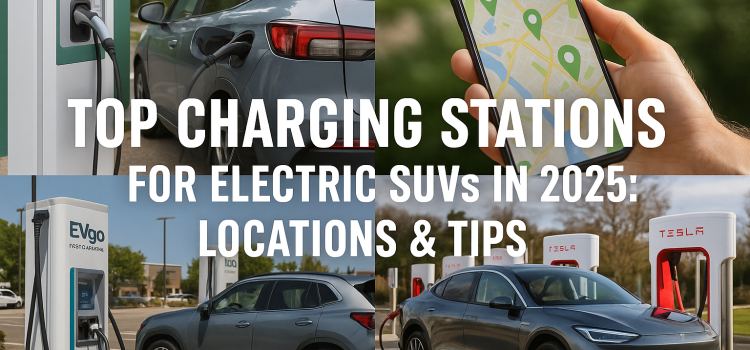
Protect your Swiss home from pesky insects without compromising on style or comfort. At Wunschmasse.ch, we offer premium, custom-made Moskitonetz (mosquito nets) designed specifically for Swiss homes. Our tailored solutions combine durability, functionality, and elegance to ensure you enjoy fresh air freely while keeping bugs out. Whether for windows or doors, our mosquito nets integrate seamlessly with your home’s aesthetic, providing effective Insektenschutz (insect protection) that you can trust.
Why Choose Wunschmasse.ch for Your Moskitonetz Needs in Switzerland?
When it comes to protecting your home from insects, the quality and fit of your mosquito netting are crucial. Here at Wunschmasse.ch, we specialize in Massanfertigung (custom-made) mosquito nets that guarantee a perfect fit for every type of window and door. Our commitment to Swiss precision craftsmanship and high-quality materials ensures long-lasting protection combined with a stylish look.
What Makes Us Stand Out?
-
Custom Tailoring (nach Mass): We measure and produce mosquito nets to perfectly fit your unique windows and doors, no matter the size or shape.
-
Durable Materials: Our Fliegengitter and Moskitonetz use premium fabrics that resist wear, tear, and weather changes, ensuring your investment lasts.
-
Ease of Installation: Designed for DIY installation, our nets come with straightforward guides, making setup hassle-free.
-
Enhanced Ventilation: Our mosquito nets allow excellent airflow, so you can enjoy fresh Swiss air without worrying about insects.
-
Stylish Designs: With options ranging from Plissee to Wabenplissee, and classic Rollo styles, we blend protection with aesthetics perfectly.
By choosing Wunschmasse.ch, you’re not just buying a mosquito net; you’re investing in comfort, style, and peace of mind for your home.
Explore Our Wide Range of Window and Door Solutions Tailored for Swiss Homes
At Wunschmasse.ch, we understand every Swiss home is unique. That’s why our product range includes a variety of options to suit different styles, windows, and doors, all customizable to your exact measurements.
Expertly Crafted Plissee and Wabenplissee for Modern Swiss Interiors
Plissee and Wabenplissee shades are among our most popular products, known for combining style, energy efficiency, and practicality.
-
Plissee: These elegant, foldable blinds are highly versatile, offering privacy and light control while complementing your home décor. Perfect for living rooms, bedrooms, and kitchens.
-
Wabenplissee: Also known as honeycomb blinds, they provide excellent insulation thanks to their cellular design, helping keep your home warm in winter and cool in summer. This feature aligns well with Swiss energy-saving standards.
Both options are available in numerous colors, patterns, and materials, providing flexibility and enhancing your living space. Plus, they integrate easily with our mosquito nets, ensuring comprehensive Insektenschutz without sacrificing natural light or ventilation.
Additional Window Coverings to Complete Your Home
Our collection also features a variety of other window and door solutions:
-
Rollo and Doppelrollo: Classic roller blinds offering simplicity and function.
-
Vorhänge and Vorhang: Elegant curtains and drapes to add warmth and style.
-
Raffrollo: Roman shades that bring a classic yet contemporary look.
-
Vertikalanlagen and Lamellenvorhang: Vertical blinds for large windows and doors, ideal for modern Swiss architecture.
-
Streifenvorhang: Strip curtains that are functional for doors and commercial spaces.
-
Flächenvorhang: Panel track blinds for wide windows or as room dividers.
-
Jalousie and Holzlamellen: Venetian blinds and wooden slats for natural aesthetics.
-
Dachfenster-Rollo: Specially designed blinds for roof windows including popular models like Velux and Fakro.
Each product is designed for Massanfertigung, guaranteeing a perfect fit nach Mass for any window or door style in Switzerland.
How Our Moskitonetz Protects Your Home While Enhancing Comfort and Style
1. Superior Insect Protection Without Compromise
Our Moskitonetz and Fliegengitter effectively keep out mosquitoes, flies, and other flying insects, allowing you to open your windows and doors without worry. This is essential in Swiss regions where outdoor living is cherished, and fresh air circulation is a priority.
2. Seamless Integration with Your Home Design
Forget bulky, unattractive insect screens. Wunschmasse.ch’s mosquito nets are designed to blend discreetly with your windows and doors, preserving your home’s clean, modern look.
3. Durable and Weather-Resistant Materials
Swiss weather can be unpredictable, from summer heat to wet autumns. Our mosquito nets withstand all these conditions without fading or damage, maintaining their protective qualities year-round.
4. Easy Cleaning and Maintenance
Our materials are simple to clean and maintain, ensuring your mosquito nets look fresh and perform effectively for years.
How to Choose the Perfect Moskitonetz for Your Swiss Home
Choosing the right mosquito net depends on several factors including window type, usage, and aesthetic preferences.
Types of Moskitonetz Available:
-
Fixed Frame Nets: Ideal for windows that are rarely opened; these nets are permanently fixed and provide a sturdy barrier.
-
Retractable Nets: Perfect for doors and windows that open frequently. They roll up neatly when not in use.
-
Magnetic Nets: Easy to attach and remove, suitable for temporary or seasonal use.
-
Sliding Nets: Designed for large doors or patio windows, allowing easy passage without compromising protection.
Considerations for Swiss Homes:
-
Compatibility with window types, including standard, Velux, or Fakro roof windows.
-
Aesthetic match with existing Vorhänge, Plissee, or Rollo.
-
Installation ease, especially for historic or uniquely designed Swiss buildings.
-
Energy efficiency benefits by pairing with Wabenplissee shades.
Step-by-Step Guide to Measuring and Installing Your Moskitonetz
Getting the right fit is critical for effective insect protection. Here’s how to measure and install your mosquito net from Wunschmasse.ch.
Measuring:
-
Use a metal tape measure for accuracy.
-
Measure the width of your window or door frame at the top, middle, and bottom; use the smallest measurement.
-
Measure the height at the left, center, and right sides; again, take the smallest number.
-
For angled or irregular windows (like skylights), measure the exact shape or request professional assistance.
Installation:
-
Our mosquito nets come with clear, step-by-step instructions.
-
Most models require minimal tools and can be installed by homeowners.
-
For more complex installations, Wunschmasse.ch provides expert support.
Why Invest in Wunschmasse.ch’s Moskitonetz Solutions?
We Are Swiss Experts in Window and Door Solutions
Serving all of Switzerland, Wunschmasse.ch has built a reputation for reliability, quality, and customer satisfaction. We understand the local climate, architecture, and lifestyle, tailoring our mosquito nets and window coverings to fit perfectly.
Trusted Quality and Service
-
Years of experience in Massanfertigung and custom window solutions.
-
Use of premium materials for durability and style.
-
Comprehensive customer support from measurement advice to after-sales service.
Competitive Pricing with Superior Value
Despite offering premium products, we strive to keep prices affordable, giving you the best value without compromising on quality.
FAQs About Moskitonetz and Window Coverings at Wunschmasse.ch
1. Can I order custom-sized mosquito nets for any window type?
Yes, we specialize in Massanfertigung and create mosquito nets perfectly sized nach Mass to fit any window or door.
2. Are your mosquito nets suitable for Velux and Fakro roof windows?
Absolutely! We offer tailored Dachfenster-Rollo and mosquito nets compatible with popular roof window brands like Velux and Fakro.
3. How do Plissee and Wabenplissee differ, and which is better for energy efficiency?
Plissee blinds fold neatly and are stylish, while Wabenplissee (honeycomb blinds) provide superior insulation, making them excellent for energy savings in Swiss homes.
4. Is installation difficult for someone without DIY experience?
Not at all. Our mosquito nets come with easy-to-follow guides, and we offer customer support to assist if needed.
5. Do you deliver and install throughout Switzerland?
Yes, Wunschmasse.ch proudly serves customers all across Switzerland, offering delivery and installation support wherever you are.
Conclusion: Protect Your Swiss Home with Wunschmasse.ch’s Premium Moskitonetz
Choosing the right mosquito net is essential to maintaining a comfortable, insect-free environment in your Swiss home. With Wunschmasse.ch, you gain access to expertly crafted, custom-sized Moskitonetz, Plissee, Wabenplissee, and other window treatments designed to blend with your home’s style while providing durable protection.
Experience fresh Swiss air without the nuisance of insects—trust Wunschmasse.ch for all your insect screen and window covering needs. Visit our website today to explore our full product range and start customizing your perfect mosquito net solution.































